Explore Hebei Museum: A Journey Through Ancient Art and Culture

An Essential Guide to Visiting Hebei Museum
In This Guide
- An Essential Guide to Visiting Hebei Museum
- The Rich History and Legends of Hebei Museum
- Main Highlights: What You Absolutely Can’t Miss
- Planning Your Visit: A Practical Guide
- Tickets: Prices, Booking, and Tips
- How to Get There: A Complete Transportation Guide
- Local Cuisine and Accommodation Nearby
- Frequently Asked Questions
- Final Thoughts on Your Trip
If you’re a traveler seeking to immerse yourself in the rich tapestry of Chinese history and culture, the Hebei Museum (河北博物院) in Shijiazhuang is a destination that should not be overlooked. Nestled in the heart of Hebei Province, this remarkable museum serves as a treasure trove of artifacts and narratives that span millennia, offering visitors a unique glimpse into the region’s past.
A Journey Through Time
As you step into the museum, you’ll find yourself surrounded by an extensive collection that highlights the diverse cultural heritage of Hebei. From ancient relics to contemporary exhibitions, the museum showcases over 200,000 items that reflect the artistic and historical significance of this vibrant province. Whether you’re drawn to the exquisite porcelain, the intricately designed textiles, or the fascinating displays on the Japanese occupation and the Eighth Route Army, each exhibit tells a story that adds depth to your understanding of China’s multifaceted history.
Accessibility and Visitor Experience
Open from Tuesday to Sunday, the Hebei Museum operates from 9:00 AM to 5:00 PM and offers free admission, making it an accessible cultural experience for all. However, be sure to bring your passport or a copy of it, as identification is required for entry. For international travelers, navigating the exhibits might require a bit of planning; while many displays include English translations, some do not. A translation app can be a handy companion to enhance your visit, allowing you to fully appreciate the narratives behind the artifacts.
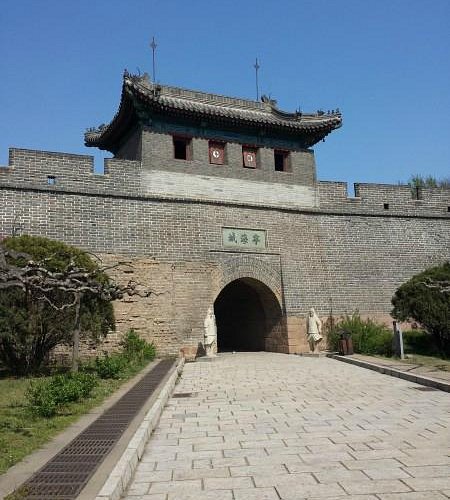
Hebei Museum.
Beyond the Exhibits
The museum is not just a repository of history; it also provides a serene environment for reflection and learning. The spacious galleries are complemented by engaging displays, including a notable exhibition on the portrayal of dragons in art and crafts. Additionally, the museum’s modern architecture is a sight to behold, creating a striking contrast against the historical treasures it houses.
Plan Your Visit
As you prepare for your visit to the Hebei Museum, consider setting aside at least a couple of hours to explore its vast offerings. This is more than just a museum visit—it’s a journey through time, a chance to connect with the essence of Hebei’s cultural legacy. Whether you’re an avid history buff or a casual traveler, the Hebei Museum promises an enriching experience that will leave you with a deeper appreciation for China’s past and present.
The Rich History and Legends of Hebei Museum
Discovering the Depths of Hebei Museum’s History and Legends
Nestled in the heart of Shijiazhuang, the Hebei Museum (河北博物院) stands as a testament to the rich tapestry of history woven through the province of Hebei. This museum is not merely a repository of artifacts; it is a vibrant narrative that spans millennia, showcasing the evolution of culture, art, and the profound stories that define the region.

Hebei Museum.
A Glimpse into the Past
Established in 1954, the Hebei Museum began as a small collection of local relics and has since transformed into a significant cultural institution. The museum’s architecture, a magnificent building from the early 1950s, complements its vast array of exhibitions. As you step through its doors, you are greeted by a space that seamlessly blends the historical and the contemporary.
The museum houses over 200,000 items, with exhibits that delve into various aspects of Hebei’s past, including:
- Ancient Artifacts: The museum showcases a plethora of artifacts from the Macheng Tomb, offering visitors a glimpse into the burial practices and artistic expressions of ancient Chinese civilizations.
- Ceramics and Calligraphy: These collections illustrate the craftsmanship and cultural importance of these art forms throughout China’s history.
- Exhibitions on Local History: Visitors can explore the narratives of the region, including the impacts of the Japanese occupation and the valor of the Eighth Route Army, making it an essential stop for anyone interested in modern Chinese history.
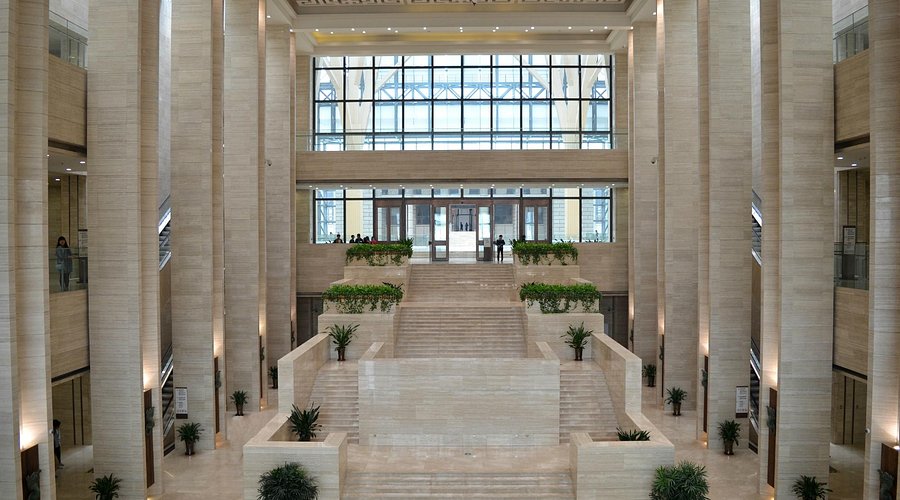
Hebei Museum.
Legends and Cultural Significance
The Hebei Museum is not just about artifacts; it is a stage for the legends that have shaped the region. One of the most compelling narratives is that of the Princess Tomb, which is intricately tied to the legends of powerful women in ancient China. The tales of these women reflect the societal norms and values of their times, offering insight into the roles that women played in shaping history.
Additionally, the museum features a remarkable exhibition dedicated to the portrayal of dragons in art and crafts. Dragons, as symbols of power and good fortune, are deeply embedded in Chinese mythology. This exhibition showcases how dragon imagery has evolved through various dynasties, reflecting the changing cultural landscape.
Visitor Experience
The Hebei Museum is not only a place for deep historical exploration but also a hub for cultural engagement. The museum hosts a variety of educational programs and temporary exhibitions that bring the stories of Hebei to life. For international travelers, many displays, especially those on modern history, are available in English, ensuring accessibility to a broader audience.

Hebei Museum.
Visitors are encouraged to spend a few hours wandering through the quiet halls, reflecting on the past while enjoying the serene atmosphere. Whether you are seated in front of a stunning piece of ancient art or pondering over the tales of the past, the museum provides a moment of respite and reflection amid the bustling city.
Practical Information
- Location: No.4 East Street, Chang’an District, Shijiazhuang, China
- Hours: Open Tuesday to Sunday, from 9:00 AM to 5:00 PM (closed on Mondays).
- Admission: Free, but visitors must present valid identification, such as a passport.
Conclusion
Visiting the Hebei Museum is more than just a look into the past; it is an invitation to engage with the stories that have shaped one of China’s most culturally rich provinces. As you explore the exhibitions and delve into the legends, you will leave with a deeper understanding of Hebei’s historical significance and its enduring legacy in Chinese culture.

Hebei Museum.
Main Highlights: What You Absolutely Can’t Miss
Discover the Hebei Museum: A Journey Through Time
When visiting Shijiazhuang, the Hebei Museum (河北博物院) stands out as a vital cultural hub that encapsulates the rich history and art of the Hebei province. Here are the essential highlights that you simply cannot miss:
1. The Magnificent Architecture
The museum itself is a stunning example of mid-20th-century architecture. Built in the early 1950s, its grand structure serves as a fitting backdrop for the treasures it houses. Take a moment to appreciate the building’s design before stepping inside to explore its exhibits.

Hebei Museum.
2. The Macheng Tomb Finds
One of the museum’s most significant displays is the collection from the Macheng Tombs. This exhibit features a variety of artifacts that date back to the Han Dynasty, showcasing the intricate craftsmanship and artistry of the era. It offers a fascinating glimpse into the burial customs and material culture of ancient China.
3. The Eighth Route Army and Japanese Occupation Exhibit
Head upstairs to discover a compelling exhibition focusing on the Japanese occupation and the role of the Eighth Route Army during the Second Sino-Japanese War. This section is presented in English, making it accessible for international visitors. The detailed narratives and artifacts provide deep insight into this tumultuous period in Chinese history.
4. The Portrayal of Dragons in Art
Dragons hold a special place in Chinese culture, symbolizing power, strength, and good fortune. The museum features an impressive exhibition dedicated to the representation of dragons in various art forms throughout Chinese history. While some descriptions may lack English translation, the visual splendor will leave an indelible mark on your experience.
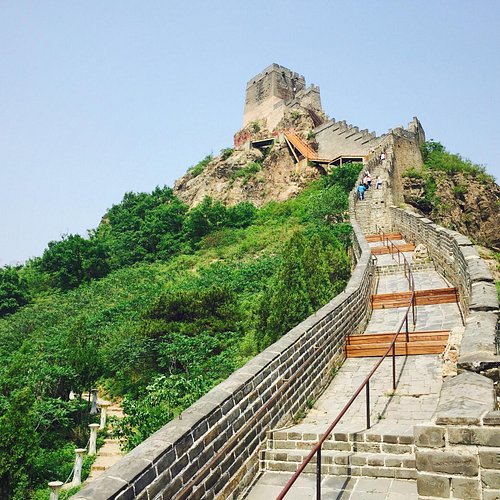
Hebei Museum.
5. Ceramics and Modern Art
The ground floor houses a splendid collection of ceramics, showcasing pieces that reflect the evolution of pottery techniques across dynasties. In addition to traditional artifacts, the museum also presents modern art exhibitions that juxtapose historical perspectives with contemporary expressions, making it a vibrant space for art enthusiasts.
6. Serene Surroundings and Local Interaction
The museum is set in a spacious area that often attracts locals, especially in the evenings. The open space in front of the museum serves as a playground for families and a gathering spot for community activities. This lively atmosphere provides a unique opportunity to engage with the local culture and observe daily life in Shijiazhuang.

Hebei Museum.
7. Free Admission – Just Bring Your Passport
One of the best aspects of visiting the Hebei Museum is that admission is free! Just remember to bring your passport or a copy of it for verification at the entrance. This makes it an accessible option for travelers looking to immerse themselves in local history without breaking the bank.
Plan Your Visit
- Location: No.4 East Street, Chang’an District, Shijiazhuang 050000, China
- Hours: Open Tuesday to Sunday, from 9:00 AM to 5:00 PM. Closed on Mondays.
- Tips: Consider using a translation app if you encounter exhibits without English descriptions, and allow at least two hours to fully appreciate all the displays.
The Hebei Museum is not just a destination; it’s an experience that invites you to explore the depths of Chinese heritage. Whether you’re a history buff, an art lover, or a curious traveler, this museum promises to enrich your understanding of Hebei’s cultural tapestry. Don’t miss out on this gem during your travels in Shijiazhuang!
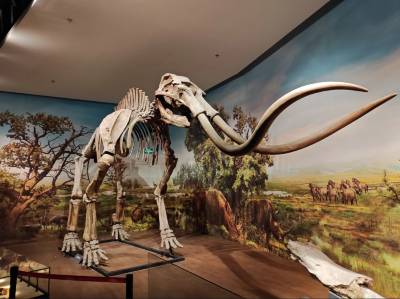
Hebei Museum.
Planning Your Visit: A Practical Guide
Essential Information for Your Visit to Hebei Museum
The Hebei Museum (河北博物院) in Shijiazhuang is a treasure trove of Chinese history and culture, making it a must-see destination for any traveler interested in the rich tapestry of China’s past. Here’s everything you need to know to plan your visit effectively.
Location and Accessibility
- Address: No.4 East Street, Chang’an District, Shijiazhuang 050000, China
- Getting There: The museum is conveniently accessible via public transport. Take Line 3 of the Shijiazhuang Metro to the Bowuyuan station, which is just a short walk from the museum entrance.
Opening Hours
- Tuesday to Sunday: 9:00 AM – 5:00 PM
- Monday: Closed
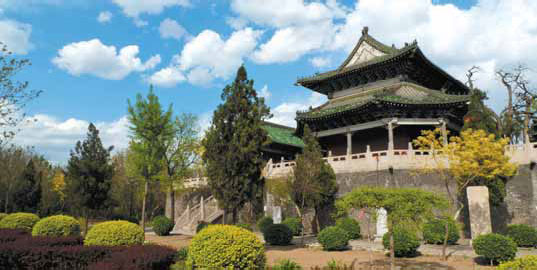
Hebei Museum.
Tip: To avoid crowds, consider visiting during weekday mornings.
Admission Details
- Entry Fee: Free
- Identification: Bring your passport or a clear copy of it for entry verification, as it is required by security personnel.
Highlights of the Museum
The Hebei Museum houses an impressive collection of artifacts that span various periods of Chinese history, including:

Hebei Museum.
- Exhibits on Local History: Discover the rich historical narratives of Hebei Province.
- Japanese Occupation Display: An insightful exhibit detailing the experiences during this tumultuous period, available in English.
- Ceramics and Arts Collection: Marvel at exquisite examples of Chinese ceramics and art, though keep in mind that not all displays have English translations.
Tips for International Visitors
- Language Support: While some exhibits have English translations, many do not. A translation app can be incredibly useful for navigating the exhibits without English descriptions.
- Time Allocation: Plan to spend at least two hours in the museum to fully appreciate the collections. If you’re particularly interested in specific exhibits, consider allocating more time.
- Quiet Space: The museum provides a serene atmosphere, ideal for those looking to escape the hustle and bustle of the city. Enjoy the tranquility as you explore the art and artifacts.
Nearby Attractions
After your museum visit, consider exploring other local attractions:
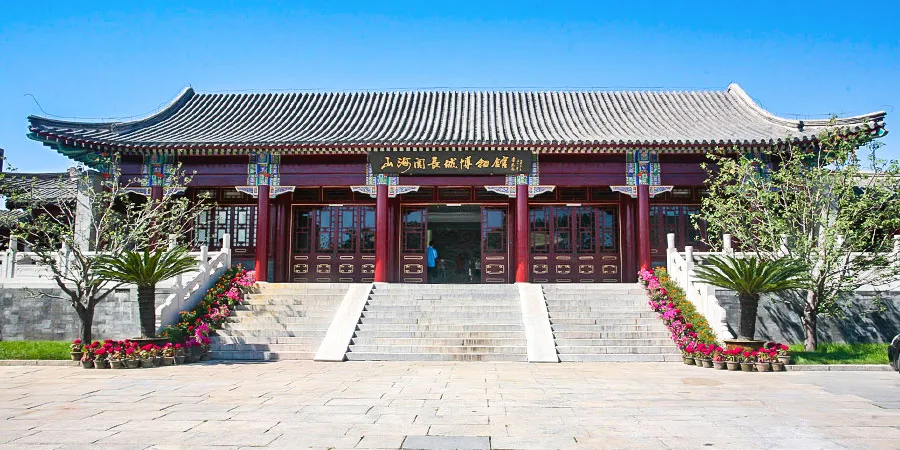
Hebei Museum.
- Shijiazhuang Museum: A short distance away, this museum offers additional insights into local culture and history.
- Walking Tours: Join a guided walking tour to discover more about Shijiazhuang’s rich heritage and vibrant community.
Final Thoughts
The Hebei Museum is not just a place to view artifacts; it’s a gateway to understanding the rich historical narrative of Hebei and China as a whole. Whether you’re a history buff or a casual tourist, the museum promises an enriching experience. Remember to take your time, absorb the stories told through the exhibits, and enjoy your journey through time!
Tickets: Prices, Booking, and Tips
Visiting Hebei Museum: Ticket Information, Booking, and Helpful Tips
A journey through the Hebei Museum (河北博物院) is not only a deep dive into the region’s rich history but also a chance to witness stunning artifacts that tell the stories of ancient China. Here’s everything you need to know about visiting this remarkable institution, including ticket prices, booking procedures, and essential tips for a smooth experience.
Admission Details
- Entrance Fee: Admission to the Hebei Museum is free of charge. This makes it an accessible destination for all travelers eager to explore Chinese history and culture.
- Identification Requirement: Visitors must present a valid form of identification for entry. It is advisable to bring your passport or a clear photo of it, as museum staff may request to verify your identity.
Opening Hours
The Hebei Museum welcomes visitors during the following hours:
– Tuesday to Sunday: 9:00 AM – 5:00 PM
– Monday: Closed
Make sure to plan your visit accordingly, as the museum is closed on Mondays.
Booking Your Visit
While no advance booking is necessary given the museum’s free admission policy, it can be beneficial to check the official website for any updates on special exhibitions or events that may require prior registration. This ensures you won’t miss out on any unique experiences during your visit.
Tips for a Great Experience
-
Language Considerations: Although many exhibits are well presented, some descriptions may lack English translations. To enhance your understanding, consider downloading a translation app that can read images, or bring a translator if possible.
-
Explore the Exhibits: The museum features a variety of exhibitions, including local history, art, and significant archaeological finds such as the Macheng Tomb collection. Allocate at least 2 hours to fully appreciate what the museum has to offer.
-
Transportation: The museum is conveniently located near public transport. If you are using the subway, disembark at Bowuyuan Station (Line 3), which is just a short walk away from the museum.
-
Photography: Capture the beauty of the museum’s architecture and exhibits, but be mindful of any photography restrictions in specific exhibit areas.
-
Quiet Time: If you seek a serene environment, consider visiting during weekdays to avoid larger crowds, allowing for a more reflective experience as you explore the art and history on display.
By keeping these tips in mind and preparing ahead of time, your visit to the Hebei Museum will undoubtedly be a rewarding experience, filled with insights into the rich tapestry of Chinese history and culture. Enjoy your journey through time!
How to Get There: A Complete Transportation Guide
Navigating to Hebei Museum: Your Transportation Guide
The Hebei Museum (河北博物院), located in Shijiazhuang, the capital of Hebei Province, is a treasure trove of Chinese history and culture. Whether you’re a history enthusiast or a casual traveler eager to explore, getting to this remarkable museum is straightforward. Here’s a detailed guide to help you reach the Hebei Museum with ease.
Getting to Shijiazhuang
By Air:
The nearest major airport is Shijiazhuang Zhengding International Airport (SJW), approximately 30 kilometers from the city center. This airport connects Shijiazhuang with several domestic and international destinations.
- From the Airport:
- Taxi: The most convenient option is to take a taxi directly to the museum. The journey takes about 40 minutes and costs approximately 100-150 RMB.
- Airport Shuttle: Buses run from the airport to various parts of the city. Check for routes heading toward the city center, and then transfer to local transportation.
By Train:
Shijiazhuang is well-connected to major cities across China via high-speed trains. If you are traveling from Beijing, the journey takes about 1.5 hours. Trains from Tianjin, Zhengzhou, and other cities are also frequent.
- From Shijiazhuang Railway Station:
- Metro: Take Line 3 towards Bowuyuan Station, which is the closest metro stop to the museum. The ride is approximately 20 minutes.
- Taxi: Alternatively, a taxi will get you there in about 15 minutes.
By Bus:
Long-distance buses operate from various cities to Shijiazhuang. The main bus station is located in the city center, making it easy to transfer to local transportation options.
Local Transportation in Shijiazhuang
Metro:
The Shijiazhuang Metro is a reliable and efficient way to navigate the city. As mentioned, Line 3 has a stop at Bowuyuan Station, just a short walk from the museum. Service is frequent, making it a great option for travelers.
Bicycles & E-scooters:
For those who enjoy cycling, Shijiazhuang has a bike-sharing program. E-scooters are also available for rent through various apps. Riding around the city can be a fun and scenic way to reach the museum.
Taxis and Ride-Hailing Apps:
Taxis are widely available, and ride-hailing apps like Didi offer a convenient alternative. Ensure you have your destination written in Chinese or use the app for ease of communication.
Museum Address and Opening Hours
- Address: No. 4 East Street, Chang’an District, Shijiazhuang, Hebei Province, 050000, China.
- Opening Hours:
- Tuesday to Sunday: 9:00 AM – 5:00 PM
- Monday: Closed
Important Tips for Visitors
- Free Admission: Entrance to the museum is free, but you must present a valid ID or passport for verification.
- Language Considerations: While some exhibits have English translations, many do not. Consider downloading a translation app or bringing a translator if you’re not comfortable with Chinese.
- Plan Your Visit: Allocate at least 2-3 hours to explore the museum thoroughly, especially if you have an interest in specific exhibits.
By following this guide, you can easily navigate your way to the Hebei Museum and immerse yourself in the rich history and culture of Hebei Province. Enjoy your journey!
Local Cuisine and Accommodation Nearby
When you visit the Hebei Museum in Shijiazhuang, not only will you immerse yourself in the rich tapestry of Chinese history, but you’ll also have the chance to savor local delicacies and find comfortable accommodations nearby. Here’s a handy guide to enhance your cultural experience.
Local Cuisine
Shijiazhuang offers a delightful array of culinary options that reflect the flavors of Hebei Province. Here are a few must-try dishes and where to find them:
-
Baocui (饱脆): A traditional Hebei snack, these crispy fried pastries are often filled with meat or vegetables. For an authentic taste, head to Xiangfu Snack Street, where you can sample various regional specialties.
-
Guan Tang Baozi (关汤包子): These steamed buns filled with savory broth are a local favorite. Lao Wang Guo Baozi is renowned for its deliciously crafted baozi, and it’s a great spot for a quick lunch.
-
Bing (饼): A type of unleavened flatbread that pairs beautifully with various dishes. Shijiazhuang Zhoufanzhuang is a popular restaurant known for its exceptional bing and diverse menu.
-
Donkey Meat Sandwich (驴肉火烧): An iconic Hebei dish, this sandwich features tender donkey meat stuffed in a crispy bun. You can find one of the best versions at Old Donkey Meat Restaurant in the city center.
-
Suan Ni Bai Rou (蒜泥白肉): This garlic-infused pork dish is a refreshing choice, especially during the warmer months. Dengfeng Restaurant offers a delicious rendition that you shouldn’t miss.
Accommodation Nearby
After a day of exploring the museum and tasting local delicacies, you’ll want a comfortable place to rest. Here are some excellent accommodation options within walking distance of the Hebei Museum:
-
Hilton Shijiazhuang: Located just across the street from the museum, this luxury hotel offers modern amenities, a fitness center, and on-site dining. It’s perfect for travelers seeking comfort and convenience.
-
Shijiazhuang Yujia Hotel: A budget-friendly option that doesn’t compromise on quality. This hotel is known for its clean rooms and friendly service, making it an ideal choice for families and solo travelers alike.
-
GreenTree Inn Shijiazhuang: Offering affordable accommodation with essential amenities, this hotel is well-rated for its convenience and proximity to the city’s attractions. It’s a great base for those who want to explore more of Shijiazhuang.
-
Shijiazhuang International Hotel: A mid-range option that provides spacious rooms and a variety of dining options. It’s known for its excellent service and is situated close to the city’s business district.
With these local culinary delights and comfortable accommodations, your visit to the Hebei Museum will be an enriching experience filled with history, flavor, and relaxation. Enjoy your journey through this fascinating region of China!
Frequently Asked Questions
Frequently Asked Questions
1. What are the opening hours of Hebei Museum?
Hebei Museum is open Tuesday through Sunday from 9:00 AM to 5:00 PM. The museum is closed on Mondays, so plan your visit accordingly!
2. Is there an entrance fee to visit the museum?
No, there is no entrance fee to visit Hebei Museum. However, visitors must present a valid form of identification, such as a passport, to gain entry.
3. What should I bring when visiting the museum?
As a foreign visitor, it is essential to bring your passport or a clear photo of it, as museum staff will require identification for entry. Additionally, consider bringing a translator app on your phone to help with any exhibits that may not have English translations.
4. Are exhibits in English?
While some exhibits, especially those on topics like the Japanese occupation and the Eighth Route Army, feature English translations, others may not. Many visitors recommend having a translator app handy to enhance your experience.
5. How long should I plan to spend at the museum?
Most visitors suggest allocating at least 2 to 3 hours to fully appreciate the exhibits and collections on display, which cover a range of topics related to local history and culture.
6. How do I get to Hebei Museum?
The museum is conveniently located in the heart of Shijiazhuang. You can access it via public transportation, including the Shijiazhuang Metro (Line 3), which stops at Bowuyuan Station nearby.
7. What types of exhibits can I expect to see?
Hebei Museum boasts a diverse range of exhibits, including artifacts from the Mancheng Tombs, displays related to local history, and modern art. A notable feature is the portrayal of dragons in art, which showcases the cultural significance of this symbol in Chinese tradition.
8. Is the museum suitable for children?
Yes! Hebei Museum offers a family-friendly environment where children can learn about Chinese history and culture through engaging exhibits. The spacious layout and serene atmosphere make it an ideal place for families to explore together.
Final Thoughts on Your Trip
As your journey through the Hebei Museum comes to a close, take a moment to reflect on the treasures of history and culture that you have encountered. This remarkable institution is not just a repository of artifacts; it is a vibrant testament to the rich tapestry of Hebei’s past and its significant role in the broader narrative of Chinese history.
Highlights of Your Visit
- Intriguing Exhibits: From the poignant displays on the Japanese occupation and the Eighth Route Army to the artistic interpretations of dragons, each exhibit offers a unique lens through which to understand the region’s history.
- Cultural Immersion: The museum’s commitment to showcasing local history through art and artifacts provides an intimate connection to the traditions and stories that have shaped Hebei.
- Accessibility: With free admission and English translations for many displays, the museum is welcoming to international visitors, making it an excellent starting point for anyone eager to delve into Chinese culture.
Final Thoughts
As you leave the museum, remember that your exploration of Hebei doesn’t have to end here. The surrounding city of Shijiazhuang offers a plethora of experiences that echo the historical themes you’ve discovered. Consider joining a walking tour to further immerse yourself in the local culture or savor a meal at one of the nearby restaurants that celebrate Hebei’s culinary heritage.
Your visit to the Hebei Museum is a reminder that history is not just about the past; it is a living narrative that continues to influence the present and future. Carry the stories and insights you’ve gained with you, and let them inspire your continued exploration of this fascinating region. Safe travels!